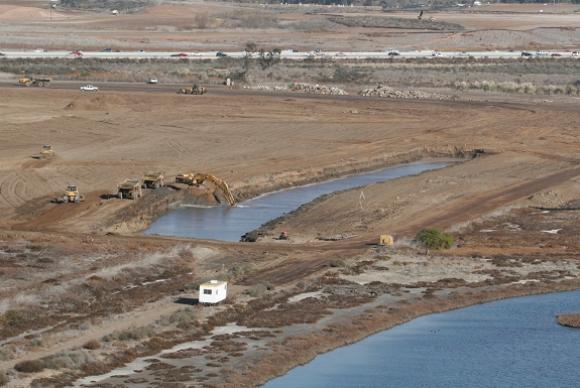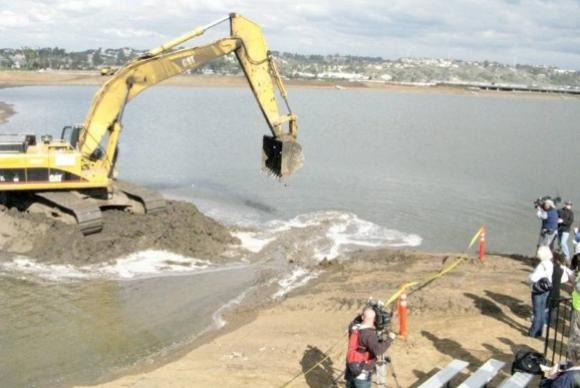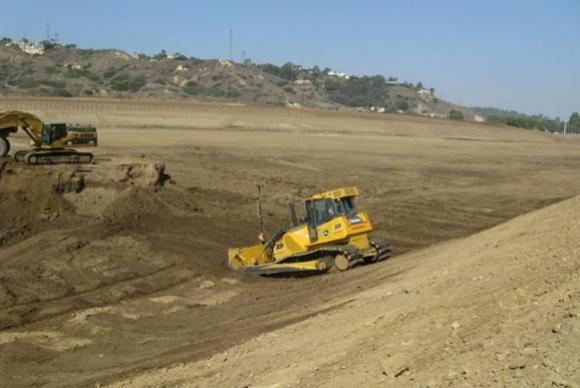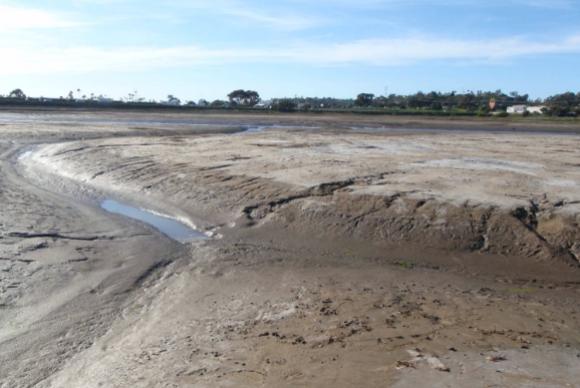Staging for construction of the wetland restoration project at SDL began in August 2006 with the delivery of rock and gravel material for use in constructing the haul roads and berms, installation of construction fencing to delineate project boundaries and sensitive habitat, and BMP (best management practice) fencing to contain soils within the project area during rainfall events. Construction proceeded in September 2006 with the clearing and grubbing of vegetation and debris from project areas to the south of the San Dieguito River and west and east of Interstate 5. Construction of the large subtidal and intertidal basin W1 (44 acres) west of Interstate 5 commenced in December 2006 and was completed with opening to tidal exchange on January 23, 2008.
In April 2007, the construction of wetland habitat commenced on the east side of Interstate 5, both north and south of the San Dieguito River in areas that were planned intertidal vegetated salt marsh and mud flat habitat. The construction of tidal creek networks was completed on the east side of the freeway, north of the river, and these areas were open to tidal exchange on December 3, 2008; modules south of the river (W5/10) were completed in early 2009. Excavation and grading to create middle and high marsh in modules W2/3 on the west side of the freeway adjacent to the San Dieguito River was largely completed by 2008, with the addition of tidal creeks completed in November 2010. To increase tidal inundation and drainage of the constructed marsh plain, these modules were re-graded to lower elevations with greater slope in March 2014.
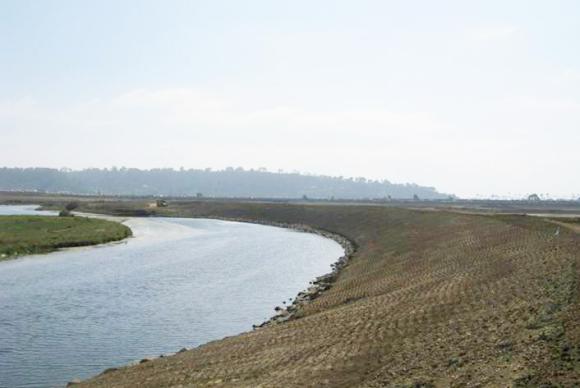
Berm 8 and the San Dieguito River channel.
The approximate 2.2 million yards of material excavated from the construction site was deposited in disposal sites within the project area. These disposal sites were covered with topsoil and hydroseeded to control erosion. Berms that will constrain storm runoff were completed along the boundary of the effective flow area of the San Dieguito River. Inlet channel dredging was completed in September 2011, with post-construction performance monitoring commencing in January 2012.
Following excavation and grading, portions of the restoration project were planted with salt marsh vegetation. Cordgrass is important nesting habitat for the Federally listed endangered Ridgway’s Rail. About 20,000 cordgrass plants were planted widely throughout the restoration site in planned low marsh with the largest planting in November 2011. Other plant species were planted in planned high and middle marsh beginning in 2008, and planting has continued intermittently through 2022.
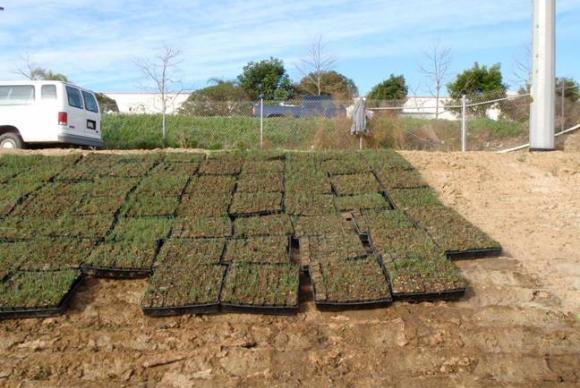
Flats of native plants (primarily pickleweed) ready for planting.
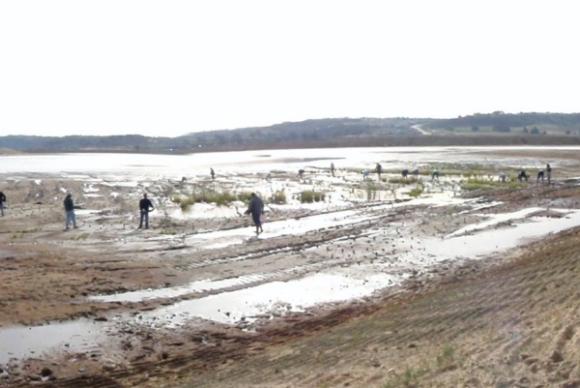
Work crew planting native plants along the west side of W16.
